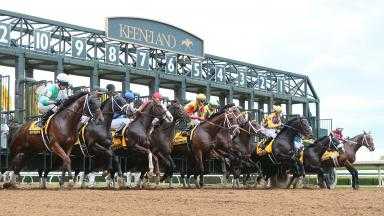Horse racing has been making the news for all the wrong reasons as of late. Horse deaths are becoming increasingly worrisome in the public eye. While spectators across the country pack the stands to enjoy the atmosphere, a dark cloud looms over the horse racing industry.
Recent Horse Deaths
The famed Santa Anita Park in Arcadia California will host this weekend’s Breeder’s Cup. Unfortunately, the park is still struggling to recover from the deaths of over two-dozen horses this past racing season. Last season, which began on December 26, 2018 and ended June 23, 2019 saw 30 horses die both in training and competition. This is an alarmingly large number for one of the flagship tracks in all of horse racing.
This trend, however, reaches beyond one track in southern California. Here in Kentucky, the horse capital of the world, horse deaths are a major cause for concern. 3 horses were euthanized over the course of just 4 days at Keeneland and a fourth followed just days later. Officials and spectators alike are left puzzled and concerned by such a tragic start to the season.

Are They Preventable?
The short answer is a resounding “no”. For as long as horse racing has existed, horse deaths have been an unavoidable reality. This is due, in large part, to the anatomy of a thoroughbred racing horse. Experts have long sought to find a remedy to lower extremity injuries in horses, but euthanization remains the only viable option.
Dr. Larry Bramlage is an award-winning equine surgeon based in Lexington. When asked about the recent horse deaths at Keeneland, he offered insight into why they are so common.
“Horses are a prisoner of their own anatomy… if you sprain your ankle or fracture your leg… you have to have bed rest; but you can’t put a horse in bed. There are injuries which we just have no treatment mechanism for.”
While there is no revolutionary medical treatment for fatal injuries in horses, modifications can be made to facilities, training and nutrition. While these changes may not prove life-saving for some horses, they are useful nonetheless.
Future Challenges

Most spectators who visit their local tracks on a Saturday afternoon do not anticipate the death of a racehorse. It is a heart-wrenching experience for all parties involved. The impact that horse deaths have on spectators can produce a litany of challenges for the industry going forward.
Parents may be reluctant to bring their children to the races if they feel the risk of exposing them to a traumatic event may be too high. Beyond loss of spectators, anti-horse racing movements have spawned across the country. Animal rights activists, pictured above, gathered outside of Keeneland last Saturday in protest of horse racing. “Horse racing kills horses!” they chanted on an overcast Saturday afternoon.






